Green off-grid systems (1)
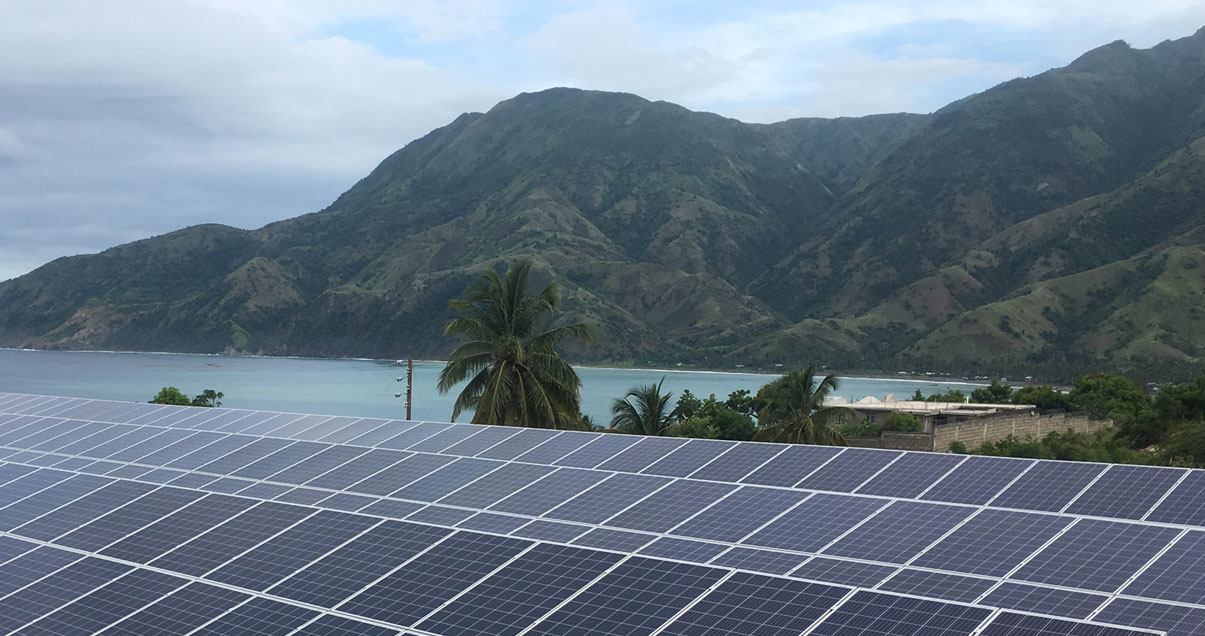
The seventh UN Sustainable Development goal could not be any clearer: by 2030, “ensure access to affordable, reliable, sustainable and modern energy for all.” But how can this be achieved? The answer lies in an independent, local or regional electricity supply based on renewable energy sources.
„It’s hard to imagine a place without any electricity. Imagine how eerie it would be, out on the streets at night with no sources of light. You wouldn’t leave your home.“
What Heiko Stieber, project manager at SMA Sunbelt GmbH, experienced in Haiti is reality for around a billion people in countless regions of the world that are not connected to their country’s central utility grids. And the prospect of these regions ever becoming electrified looks gloomy. Thousands of kilometers of power lines would need to be installed, operated and maintained. But this is unlikely to happen, due to not only a lack of technical resources but also investment policies that favor megaplants and power lines for heavy industry from governments hoping to benefit from tax revenue and enhanced prestige.
Looking at the long-term picture, however, the electrification of rural communities is absolutely vital for a country’s development. Without electricity, the digitalized world remains out of reach and social and economic participation and development are hampered. Those able to afford the luxury can light their homes with oil lamps or use diesel generators to produce electricity to power their cell phones and televisions. But the emissions from diesel generators are toxic to the environment – and all the more so given the rapidly growing population.
The solution – Off-grid systems based on renewable energy sources.
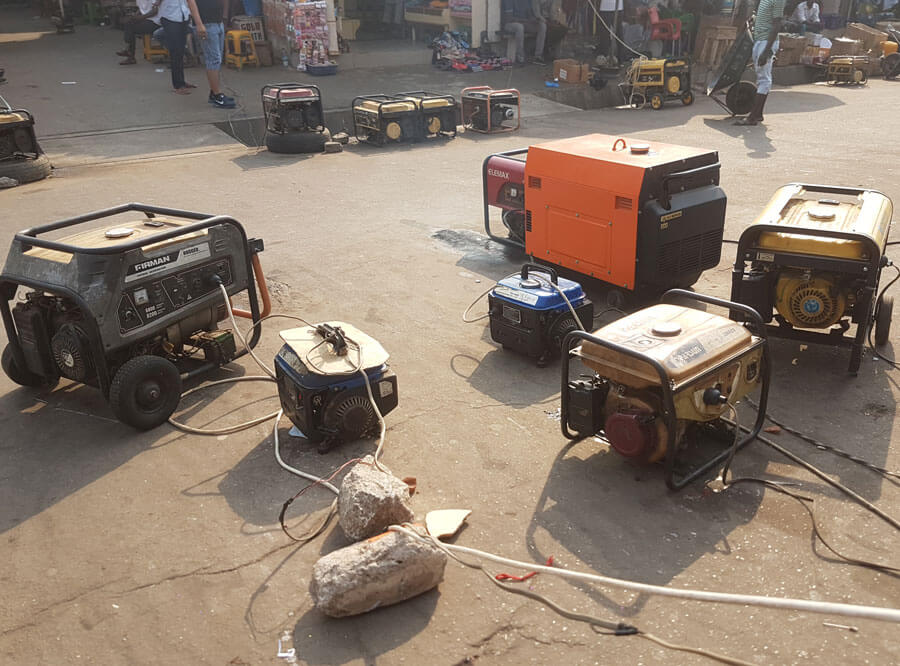 © RLI
© RLI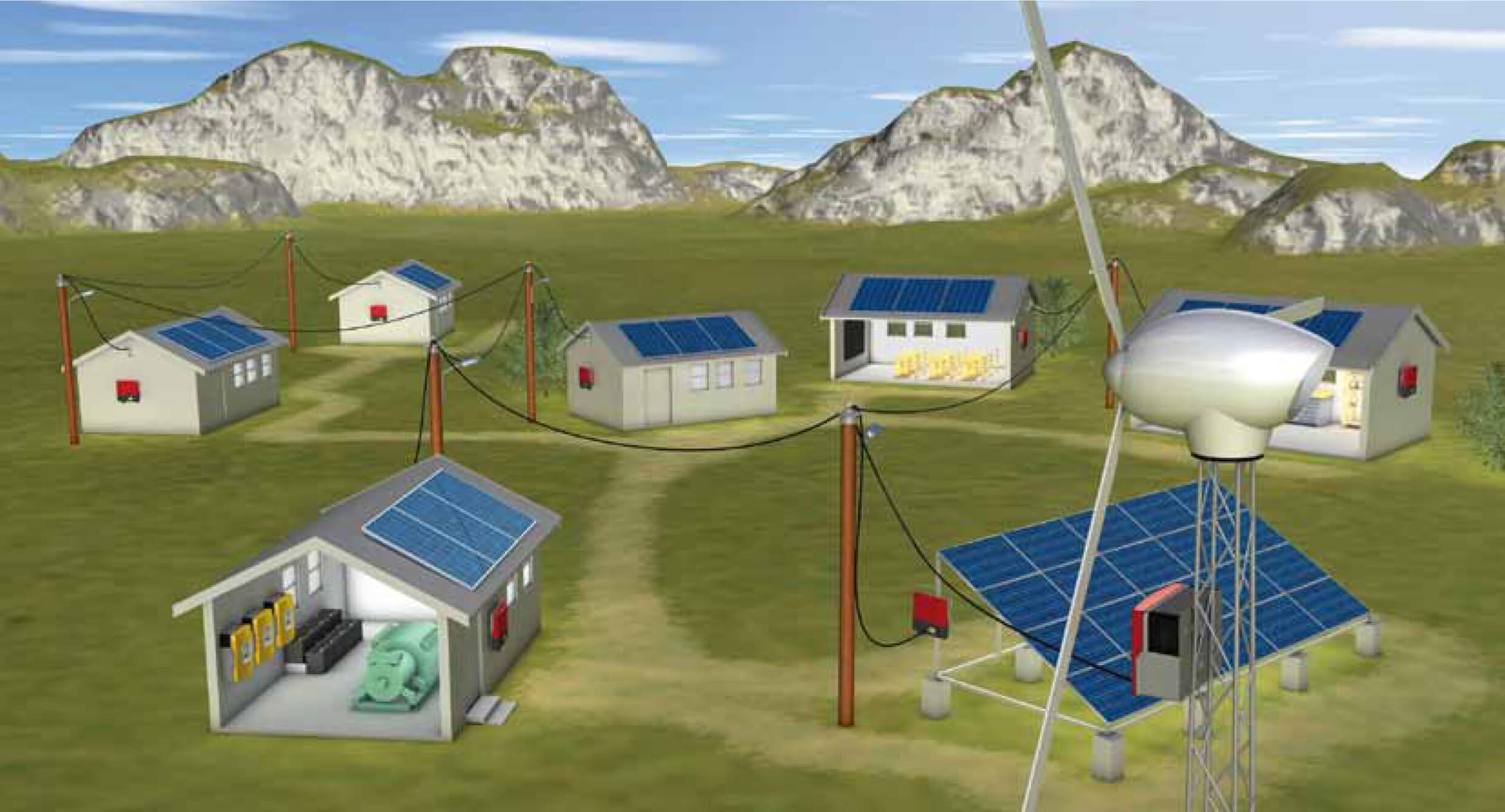
Cleaner, cheaper and smarter
Researchers at the independent, non-profit Reiner Lemoine Institute have developed a tool that visualizes scenarios for the electrification of specific regions or even the whole world by 2030.
The Renewable Energy Off-Grid Explorer shows what level of investment and what greenhouse gas emissions can be expected if full electrification is to be achieved on current trends – or through different combinations and configurations of grid expansions and upgrades, new mini-grids and solar home systems.
This calculation shows, first, that it would be possible to supply the world’s population predominantly with off-grid systems. Second, this would cost less than the favored measure of expanding and upgrading centralized utility grids. Third, smaller, local utility grids based on renewable energies would generate only minimal greenhouse gas emissions, while solar home systems would generate none at all.
The accompanying study, sponsored by the Federal Ministry for the Environment, Nature Conservation and Nuclear Safety, came to the following conclusion: Electrification by means of off-grid solutions based on renewable energies is cleaner, cheaper and smarter than all other options.
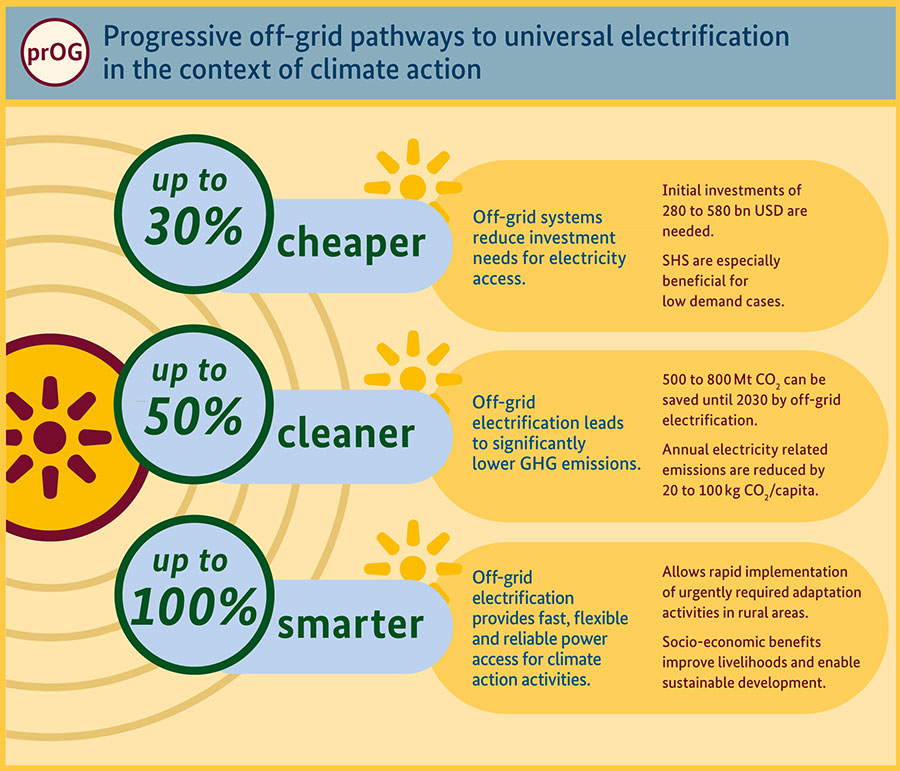
A leading global trend – decentralized, sustainable and grid-independent energy systems
Institutions like the World Bank as well as a range of research institutes and economic experts have put off-grid systems firmly on the agenda. The incentive programs organized by the Climate Investment Fund, African Development Bank, German Society for International Cooperation (GIZ) and USAid as well as various initiatives launched by businesses and business-related institutions like the Rockefeller Foundation run to the billions of euros and US dollars.
After all, it’s thanks only to sustainable off-grid systems that the seventh UN Sustainable Development goal of ensuring universal access to energy has any chance of becoming reality without other sustainability goals aimed at mitigating climate change being sacrificed in the process.
According to a projection calculated by the ESMAP (a program launched by the World Bank), the installation of 210,000 solar-powered mini-grids could help to avoid 1.5 million tonnes of carbon emissions compared with traditional scenarios.
„In short, mini-grids in combination with grid-independent PV systems offer enormous potential for helping the world to achieve the seventh UN Sustainable Development goal by 2030 in a cost-effective manner.“
– State of the Global Mini-Grids Market Report 2020
In practice, this massive investment can be explained by the fact that politicians hope that all this research will provide important insights into exports. Businesses want to secure sales markets – initially for technologies relating to renewable energies and then, as electrified regions become more prosperous, for additional products and services. And emissions trading needs projects that lend themselves to carbon compensation by means of certificates.
At the same time, the cost of manufacturing sustainable mini-grids has fallen significantly over the past decade, making them an even more attractive proposition. According to the ESMAP report, one kilowatt-hour of electricity generated by a mini-grid will be two thirds cheaper in 2030 than it is now.
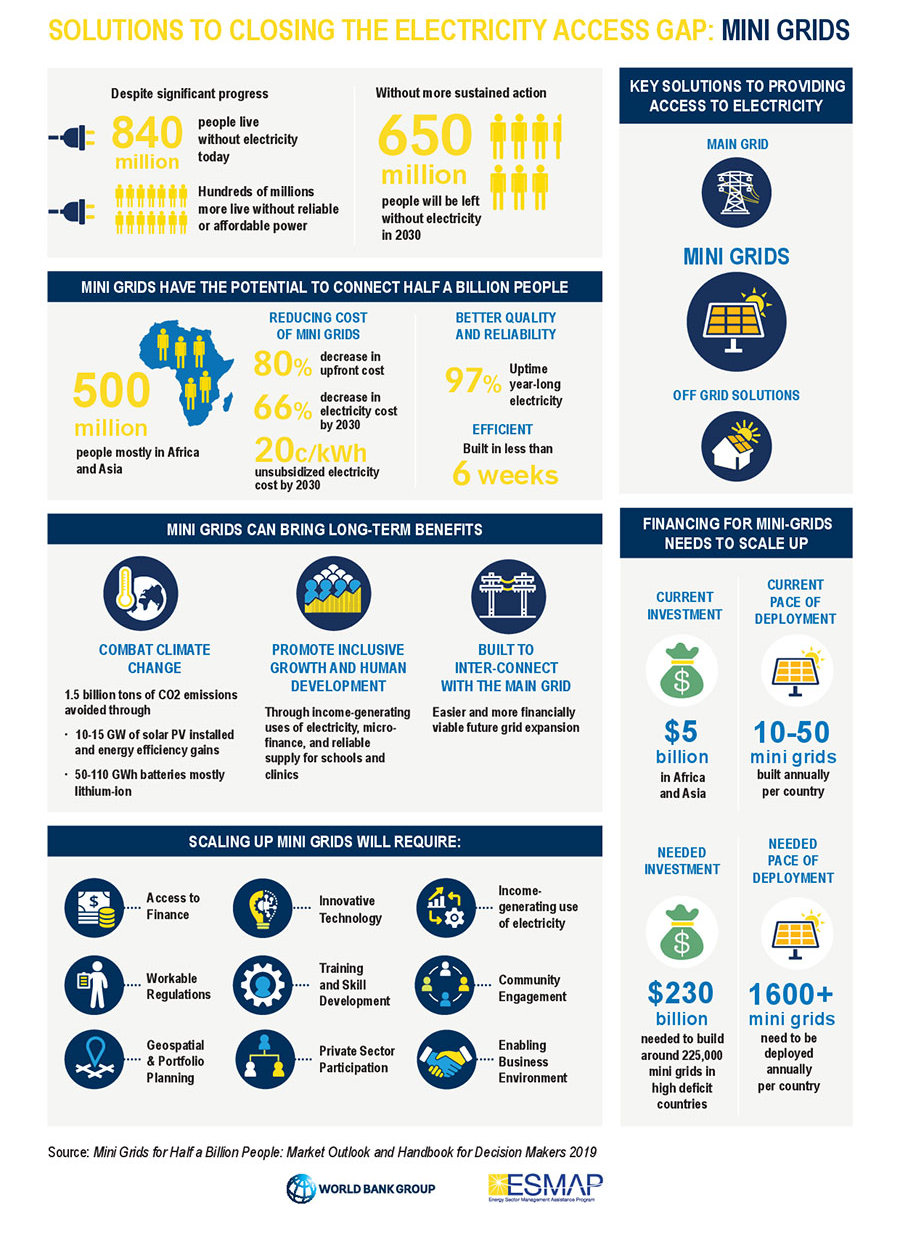
Source: Mini Grids for Half a Billion People: Market Outlook and Handbook for Decision Makers 2019, World Bank / ESMAP
And so the chances of a nationwide supply to the poorly electrified countries by 2030 are increasing. According to ESMAP, 1,600 new mini-grids would have to be installed per year and country, and 40 percent of the world’s electricity demand would ultimately be generated and distributed by mini-grids. How this can be implemented in concrete terms can be read in the second part of our article.

